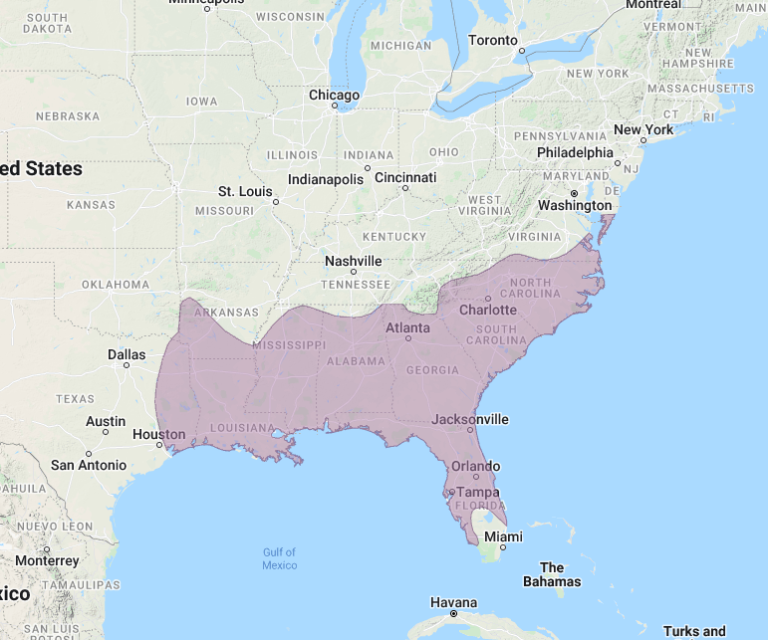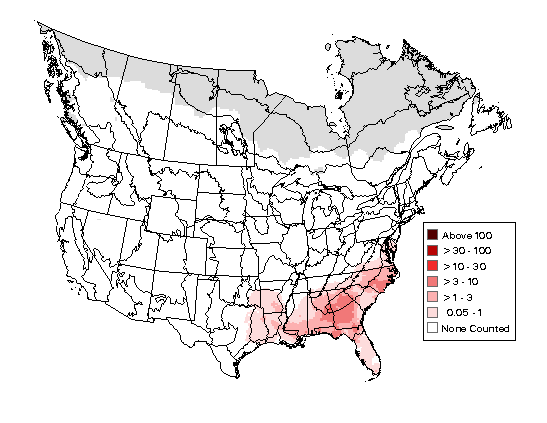Birdfinding.info ⇒ Common in pine forests in the core of its range, from Alabama and North Carolina to the Florida Panhandle. Less common and more localized farther west, north, and south. In South Florida, it is often seen at Long Pine Key in Everglades National Park. On the Delmarva Peninsula, consistent sites include Point Lookout and Eastern Neck, Blackwater, and Chincoteague National Wildlife Refuges. For a more detailed view of its distribution, see Breeding Bird Survey Abundance Map in Notes, below.
Brown-headed Nuthatch
Sitta pusilla
Endemic to the southeastern U.S.
Resident mainly in pine forests, but also mixed woodlands and swamps, of the southeastern U.S., west to eastern Texas and southeastern Oklahoma, north in the interior to north-central Arkansas and southeastern Kentucky, and along the coast to Delaware, and south to southern Florida.
Regularly disperses short distances north of its usual range, with small groups sometimes taking up residence in a grove of pines for months or years. Occasionally wanders farther, with isolated records from as far as western Kansas, southeastern Nebraska, southeastern Wisconsin, and northeastern Ohio.
Identification
A tiny, short-tailed nuthatch with a comparatively large head and long bill. Visually indistinguishable from the Bahama Nuthatch (likely extinct) and very similar to the Pygmy Nuthatch, but little potential for overlap.

Brown-headed Nuthatch. (Mooresville, North Carolina; January 23, 2016.) © Jeff Maw

Brown-headed Nuthatch in fresh plumage, showing rich, warm-brown crown. (Bent Creek, Pisgah National Forest, North Carolina; December 26, 2021.) © Matt Felperin
The upperparts are mostly lead-gray, with an extensive brown crown from the forehead to the nape. There is a pale patch in the center of the nape that can be difficult to see. In fresh plumage the crown is a rich, warm shade of brown. In worn plumage it becomes pale on top but retains a dark eyeline the sides.
The underparts are mostly pale grayish, but variable—often darker on the belly, buffy on the chest, and whitish on the throat.
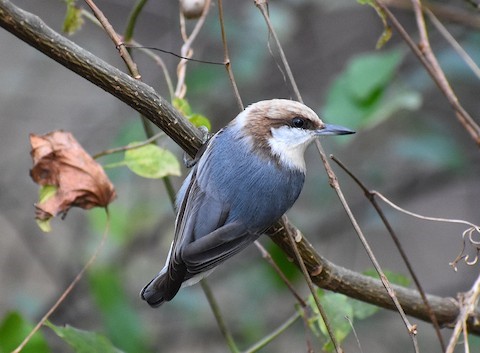
Brown-headed Nuthatch in worn plumage, showing pale crown. (Tar River Trail, Rocky Mount, North Carolina; December 18, 2020.) © John Lynch
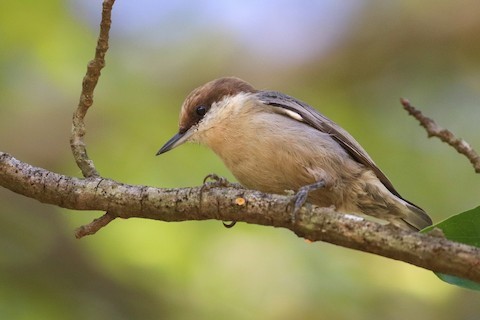
Brown-headed Nuthatch. (Union County Heritage Trail, North Carolina; October 5, 2020.) © Martina Nordstrand
Immatures resemble adults but with the colors washed out.

Brown-headed Nuthatch, immature. (Chantilly Ecological Sanctuary at Briar Creek, Charlotte, North Carolina; July 14, 2021.) © Mason Maron
Notes
Monotypic species. Traditionally considered conspecific with the Bahama Nuthatch (insularis).
More Images of the Brown-headed Nuthatch

Brown-headed Nuthatch. (Lone Star, Texas; January 10, 2021.) © Michael Mathews
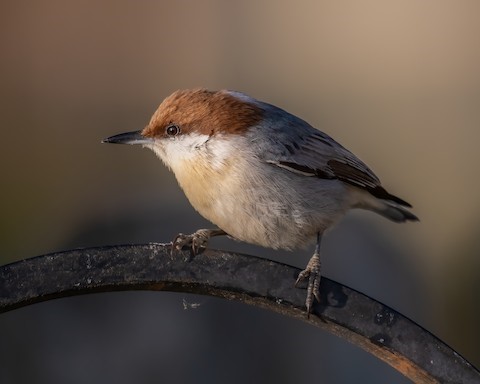
Brown-headed Nuthatch. (Lone Star, Texas; January 11, 2021.) © Michael Mathews
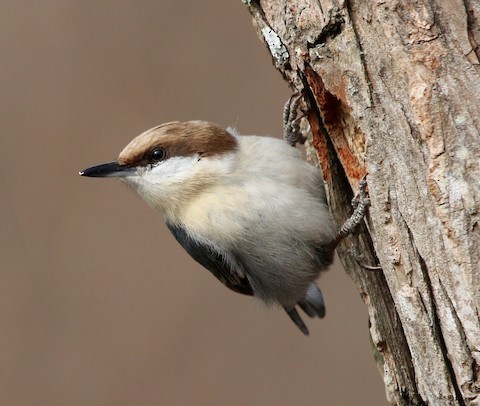
Brown-headed Nuthatch. (Shelley Lake, Raleigh, North Carolina; January 21, 2021.) © Lori White
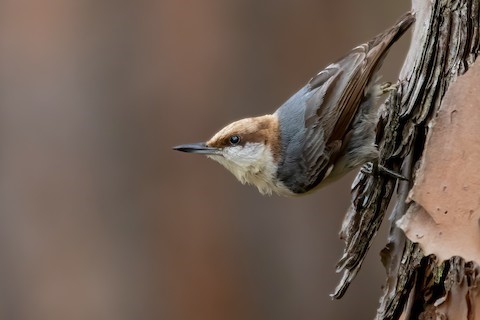
Brown-headed Nuthatch. (Hunting Island State Park, South Carolina; April 20, 2021.) © Matthew Plante
References
Alderfer, J., and J.L. Dunn. 2014. National Geographic Complete Birds of North America (Second Edition). National Geographic Society, Washington, D.C.
BirdLife International. 2016. Sitta pusilla. The IUCN Red List of Threatened Species 2016: e.T103881613A94282209. https://dx.doi.org/10.2305/IUCN.UK.2016-3.RLTS.T103881613A94282209.en. (Accessed March 11, 2022.)
eBird. 2022. eBird: An online database of bird distribution and abundance. Cornell Lab of Ornithology, Ithaca, N.Y. http://www.ebird.org. (Accessed March 11, 2022.)
Harrap, S., and D. Quinn. 1995. Chickadees, Tits, Nuthatches & Treecreepers. Princeton University Press.
Sibley, D.A. 2014. The Sibley Guide to Birds (Second Edition). Alfred A. Knopf. New York.
Xeno-Canto. 2022. Brown-headed Nuthatch – Sitta pusilla. https://xeno-canto.org/species/Sitta-pusilla. (Accessed March 11, 2022.)

